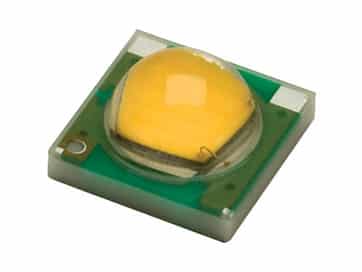LED technology is a completely new approach to lighting. Because of this, many people, including lighting designers, reps, sales, distributors and other light industry professionals, don’t fully understand LEDs. Let’s take a moment to become better acquainted with the unique characteristics of this wonderful new technology.
A “light emitting diode”, or LED, is essentially a semiconductor chip that yields photons of light when connected to an electrical current.
This is fundamentally different from conventional light sources, such as incandescent lamps, which produce light by heating a metal filament to extreme temperatures. LEDs require a driver to properly control the supplied electrical current because the characteristics of a semiconductor do not allow LEDs to have a linear relationship between voltage and current as the characteristics of a metal, as used in incandescent sources, do.
There are two main types of LED packages:
1. Low-Power Chips, which are typically used in indicator applications.
2. High-Power Chips, which are typically used in illumination applications.
Low-Power LED packages have low light output and are commonly available as through-hole mounts, as shown in the diagram below. In a low-power LED, the diode [1] is held in a tiny reflector cup [2] that is suspended in an epoxy lens [3] with the cathode and anode leads [4] extending from the bottom.
High-Power LEDs provide significantly greater light output and are generally configured as surface-mounted packages, as shown in the diagram below. In high-power LEDs, the diode [1] also rests in a reflector cup [2] and is enclosed in an epoxy lens [3]. A critical component is the heat-sink slug [4], found in the reflector cup. In high-power LEDs, the cathode and anode leads [5] are moved to the side of the package in order to allow the heat-sink slug to protrude from the bottom and conduct heat away from the chip. High-power LEDs are most commonly used for illumination purposes and thus are of greatest interest in an ever-expanding variety of commercial applications.
This is the basic information regarding LEDs and how they work. For more detailed information please refer to the Solais LED White Paper under the “downloads” section of the website.
